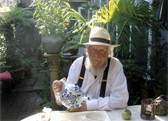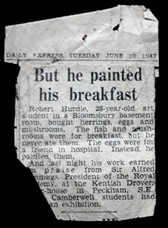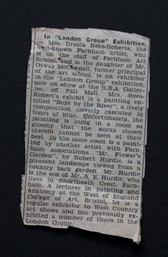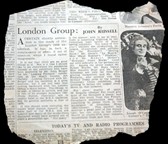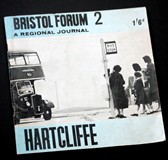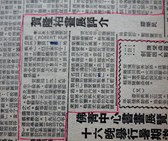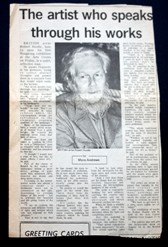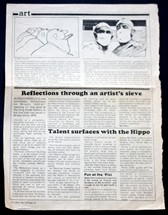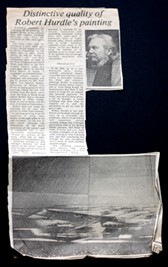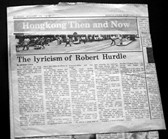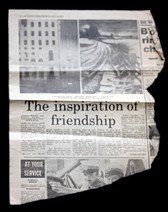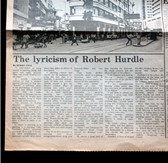New Gallery, Royal West of England Academy 2003
Robert Hurdle: Meetings with Trees
For this exhibition Robert Hurdle has selected one recurring, but not especially dominant theme from his work. 'Meeting with Trees' encourages us to examine the exceptional commitment and concentration of his work, together with its development over a long period.
Born in 1918, he studied at Richmond Art School before six years of military service. After the war he attended Camberwell School of Art and Crafts, where he was taught by William Coldstream, a leading member of the so-called Euston Road School. The artists of this informal group were conscious of the growing anienation of art from the general public. They saw realism and the measured and objective appraisal of the subject as the only valid way forward. Trees at Marshfield, 1960, is the earliest painting in the exhibition and it still retains the orange measurement marks - hallmarks of the quiet and determined observation of so many artists of the Euston Road School. The marks are still discernible in Larch Wood, Gold, 1961, the earliest of what might be called Hurdle's plantation paintings, although not all are of plantation woodland. The artist was now concentrating increasingly on the immediacy of his response and especially on the movement of light and the vitality of its various effects within these distinctive woodlands. He recorded not only what he saw, but also what he felt.
These vigorous earlier works were painted entirely on the spot. Soft Wood, 1976, Green Plantation, 1982, and Ash Grove, Dyrham, 1982, mark a sharp change of technique and approach. They introduce us to the many smaller paintings of the last ten years or so. All were painted in the studio, where he applies varying solutions of oil paint by differing methods to a horizontal canvas. On site, in the open air, it is the subject that asserts itself. In the studio the picture itself - painterly and pictorial concerns - predominate. And so these later works can enjoy a more reflective approach. The rhythms of lines, the balance of colours and the atmosphere of calm seclusion become some of the more obvious concerns. There is no change, however, to that rare combination of seriousness of purpose and gentle optimism, nor in Robert Hurdle's constant delight in the process of painting and in the concentrated observation of our landscape.
The later works are signed with a seal made for the artist in Hong Kong in 1976. The seal is a reflection of Robert Hurdle's passion for (OR response to) oriental ceramics and for the meditative character of much oriental art.
Francis Greenacreuse slides to view full text and images, click on small pictures to see large version
